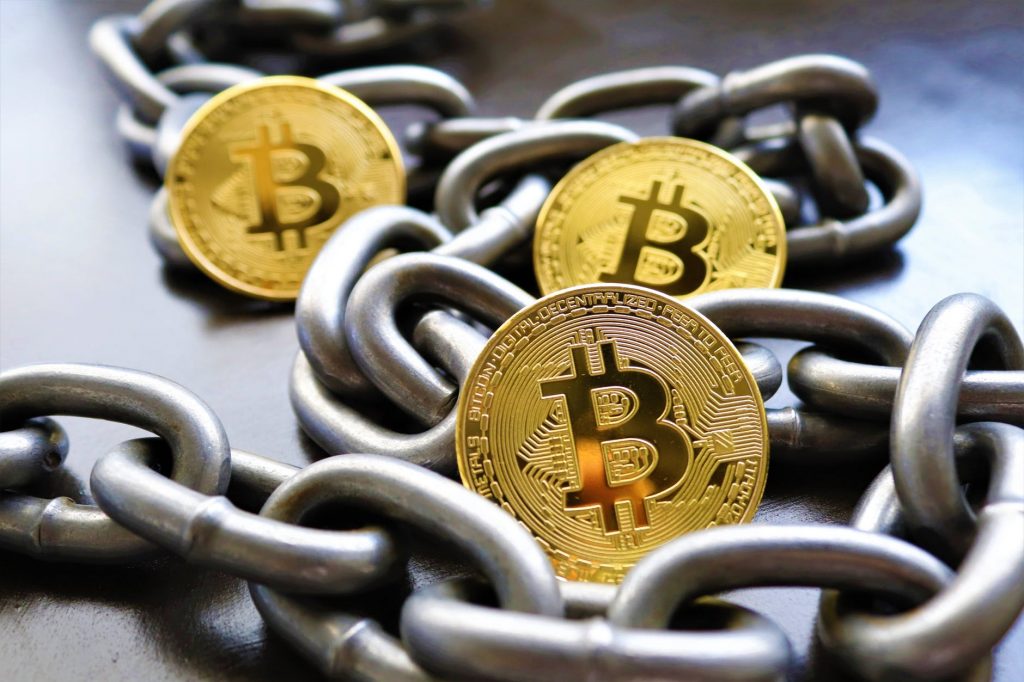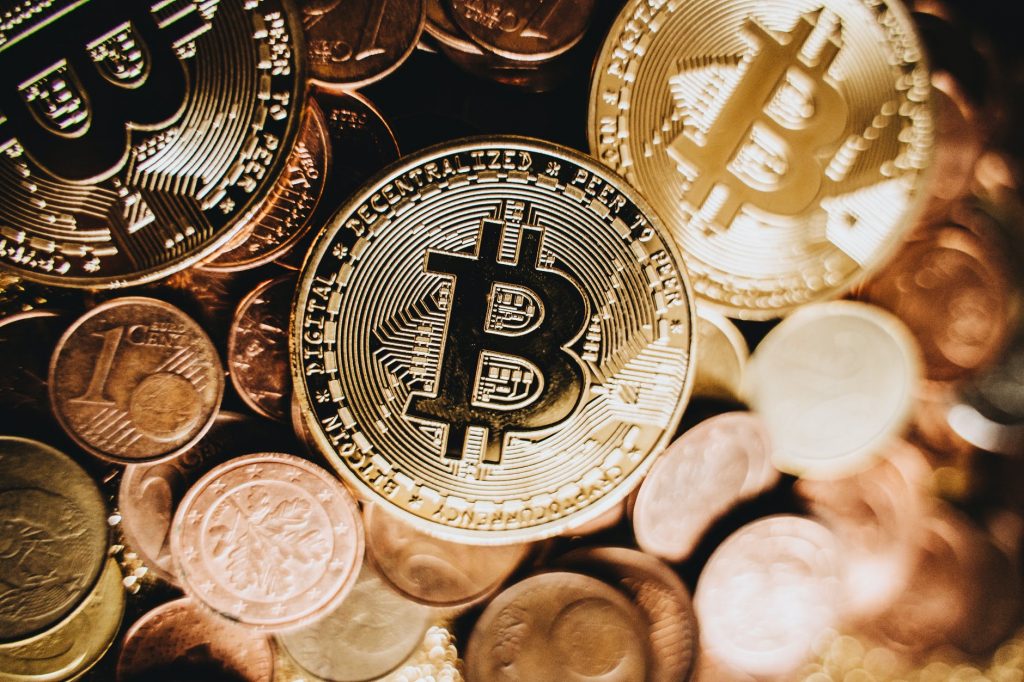The popularity of cryptocurrencies has exploded over the years. Today, leading cryptos, such as Bitcoin, Ethereum and Ripple experience significant volatility. Thus, stablecoins have emerged as a solution to tackle these price fluctuations. This review will explain how stablecoins work, the different types, pros and cons, plus how you can start trading these alternative currencies.
Stablecoins Explained
The straightforward definition is that stablecoins are a type of cryptocurrency that attempts to offset volatility by pegging its value to an underlying asset such as fiat currencies, cryptos, exchange-traded commodities, or via an algorithmic peg. Commonly, stablecoins come in at a ratio of 1 coin = 1 USD. Decentralized finance (DeFi) companies are typically the organizations issuing these altcoins.

The purpose of stablecoins is to provide price stability so that crypto-assets maintain purchasing power despite a drop in value. For example, the value of 1 Bitcoin in 2017 rose from less than USD 1,000 to over USD 19,000 and dropped back to USD 8,000 by mid-2018.
Significant intraday price swings are also common, making cryptos unsuitable for everyday use.
Stablecoins are backed by assets that are external to the crypto space. By having an asset that isn’t as affected by wild price swings, market participants can move their cryptos to stablecoins when signals of volatility are on the rise. Users can also move in and out of trades quickly while transferring assets to fiat money can take days.
How Stablecoins Work
Stablecoins maintain stability through collateralisation – with the value of the coin tied to an established asset like gold. This collateral is proof that the coin is worth the pegged amount. If the market does not have confidence in the value of the pegged coin, users will sell their coins and the price will crash. We’ve listed the common ways stablecoins are collateralised below.

Fiat-Backed Stablecoins
Fiat-backed stablecoins are those that are tied to a traditional currency with a 1:1 ratio. Commonly, stablecoins are backed by USD, though they can also be tied to the YEN, EURO or GBP. The top 3 stablecoins USDT, USDC and BUSD are good examples. Fiat backing offers the greatest certainty of a stablecoin’s value.
Typically, a stablecoin issuer will hold an amount of fiat currency and will issue the number of coins equivalent to the value of the fiat currencies in reserve.
For example, an issuer will hold 1 million USD and distribute 1 million coins worth 1 USD each.
This backing requires a level of trust in the issuer as it is difficult to prove that the issuer holds the amount of reserve it claims to.
Risks have been mitigated through the publishing of audits, but this is not a comprehensive solution.
Tether’s USDT suffered criticism when sceptics claimed that the company did not have enough collateral to back the USDT in circulation.
In 2019, a lawyer acting on behalf of Tether admitted that Tether was only 74% backed.
Despite this, Tether is still popular today with the largest market share among stablecoins.
Commodity-Backed Stablecoins
Commodity-backed stablecoins are collateralised by physical assets.
They can be pegged to precious metals such as gold and silver, or by oil and real estate.
The most popular commodity used is gold with popular examples including Tether Gold (XAUT) and Paxos Gold (PAXG).
Gold-backed stablecoins have opened the doors to average individuals looking for global investments.
Obtaining a secure location to hold gold and silver can be difficult and expensive.
However, holders of gold-backed stablecoins can sell their tokens and take possession of the underlying gold at vaults throughout the UK and Switzerland.
Such commodities can also appreciate in value, increasing the incentive to hold the asset.
Algorithmic Stablecoins
Algorithmic stablecoins don’t hold any assets as collateral.
These stablecoins maintain their peg by using algorithms and smart contracts to manipulate the coin supply in the market. The algorithmic peg adjusts the volume of stablecoins in circulation based on the price of the coin.
If the price rises, the algorithm will increase the supply of tokens in circulation to maintain the 1:1 stablecoin versus fiat ratio. This will help to alleviate the price pressure and maintain the coin’s value. If the price falls below the fiat currency it tracks, the algorithm will decrease the number of tokens in circulation.
A smart contract works similarly to a central bank’s monetary policy, detracting from the decentralised nature of cryptocurrencies. Some argue that this method is questionable as it manipulates the money supply and does not necessarily mean the peg will hold.
Crypto-Backed Stablecoins
Crypto-collateralised stablecoins are backed by another digital currency. Holders of these coins lock their cryptocurrency into a smart contract to obtain the token equal to the representative value. At a later date, the user pays stablecoins into the same contract to get their collateral back. One popular stablecoin using this structure is DAI.
As cryptocurrencies are volatile, companies tend to over-collateralise and hold more of the equivalent altcoin as a buffer against price fluctuations. Fortunately, this method is much easier to audit as a company’s collateral balance can be viewed on the blockchain.

Today, you can also get hybrid stablecoins, which combine reserves of both fiat and crypto tokens as collateral, as well as utilising algorithmic pegs.
Benefits
- Stability – The key advantage is that stablecoins bring stability to cryptocurrencies, free from the wild swings that characterise most altcoins.
- At their core, they offer more predictability and stability.
- Multiple use cases – Stablecoins can be used for several investment purposes, from acting as a safe haven asset and retail trading to cross-border payments and lending.
- Anonymity – Outside of a central banking system, stablecoins can be passed between people without direct KYC checks and government intervention.
- Fast transactions – Traders can move in and out of the crypto market while retaining the value of altcoins.In comparison, converting crypto-assets into fiat currency may take days.
- Risk management – Stablecoins provide traders with a form of insurance to counteract other riskier investments.
Drawbacks
- Central banks – Fiat-backed stablecoins are subject to the financial stability and decisions of central banks relating to the traditional currency in question.
- Investment – The consistent stability does not make it the best investment vehicle if you’re looking to profit off significant market volatility.The value of a coin is unlikely to appreciate over time as it will equal 1 unit of the underlying asset.
- Long-term viability – Skeptics have questioned the ability to maintain a peg in the long run.Historically, pegged currencies have failed due to the cost of maintaining them i.e. having enough reserves to meet redemptions in a crisis.
- The Chinese Yuan to US Dollar in 2005.
- Trust – As a collateralised cryptocurrency, it requires users to trust the entity issuing the tokens.Individuals need to have confidence that there is enough collateral to back the coin.Transparency in fiat-backed currencies is hard to achieve even with regular auditing, as demonstrated in the Tether example above.
- Decentralisation – Are stablecoins really decentralised?It could be argued that they’re not.Companies are still maintaining and manipulating the tokens issued, especially in the case of algorithmic pegs.And even with fiat-backed stablecoins, the value is heavily influenced by a central bank.
History Of Stablecoins
The popularity of cryptos stems from the introduction and growth of Bitcoin in 2008.Aside from significant profit potential arising from market volatility, cryptos can be traded 24/7 globally, compared to stocks, for example, that follow specific trading hours.
The underlying technology powering cryptocurrencies is blockchain.Blockchains are decentralised ecosystems, where no one person or group has control.They were initially designed to provide a financial system that is free from the control of central banks and governments.
Today, stablecoins are building confidence in the market and regularly feature in news headlines.However, banks are still wary of interacting with crypto exchanges due to the lack of oversight and the risks of money laundering and terrorist financing.
And whilst cryptocurrencies are legal, ongoing discussions are taking place regarding global regulations and their implications on monetary policy. For instance, the Financial Action Task Force (FATF) has expressed to G20 finance ministers that risks associated with cryptocurrencies should be mitigated immediately, especially if they have potential for mass adoption. Despite the evolution of the DeFi industry over the years, the future of stablecoins remains uncertain.
Global Evolution of Stablecoins
The use cases for stablecoins vary around the world. Japan is considered a forward-thinking country and adopter of cryptocurrencies in Asia. On the other hand, Hong Kong has turned to stablecoins to resist financial surveillance and internet censorship. In Europe, the European Central Bank (ECB), Swiss Financial Market Supervisory Authority (FINMA), and European Union (EU) Commission have published papers, such as the Markets in Crypto-Assets (MiCA) proposal, to regulate crypto assets, which are awaiting approval.
In the United Kingdom, HM Treasury and Treasury Chancellor Rishi Sunak recently conducted a consultation on a regulatory approach to crypto assets. Central banks, such as the Dutch National Bank (DNB) and the Bank of England (BOE), have also launched their own Central Bank Digital Currency (CBDC).
In Argentina, the peso faced devaluation and an annual inflation rate of over 30%. As a result, Argentines have turned to stablecoins like DAI to safeguard their money.
The United States has taken the lead in the conversation around regulating stablecoins. The Securities and Exchange Commission (SEC), US Federal Reserve, and Office of the Comptroller of the Currency (OCC) were the first entities to issue regulatory clarifications on stablecoins. Recently, the US Treasury announced that banks may use stablecoins and blockchains for payment, opening up new doors for trading stablecoins.
With that said, the White House highlighted the importance of KYC verification for future regulatory frameworks.
In Canada, VersaBank aims to launch the first Canadian-dollar pegged VCAD stablecoin.
Australia’s RBA has been sceptical of the use of stablecoins as a payment method, which is linked to the limited supply of Australian dollar-linked stablecoins.
On a global level, the G7 view is that no global stablecoin project should begin until regulatory and oversight challenges and risks have been addressed. So far, the FSB has published high-level recommendations to tackle this, while The World Bank aims to complete regulatory stablecoin frameworks by 2022.
In Arner’s 2020 paper called ‘Stablecoins: risks, potential and regulation’, he highlights that most legislation focuses on the role of stablecoins as a means of settlement for automated financial products. However, planned global stablecoins will also touch on other use cases such as digital payments, which regulatory responses must take into account.
How To Start Trading Stablecoins
Trading stablecoins can be done on participating exchange platforms. Popular options include Coinbase, Binance, and Kraken. Each platform has a slightly different sign-up process, but usually, it requires basic contact details and a few minutes of your time.
Once registered, you will need to purchase stablecoins with a 1:1 ratio. This can be done with credit/debit cards i.e.
Mastercard and Visa. Purchased coins will be displayed as an asset in your wallet. Once you’ve obtained tokens, you can convert stablecoins as often as you wish i.e. USDT vs BUSD. You can also trade against other popular cryptos like Ripple (XRP). Some stablecoins available on platforms are free, while others come with fees.

Binance and Coinbase both support crypto staking where traders can earn fixed interest or yield farming rewards. Often, users can migrate stablecoins from exchange platforms to hardware wallets i.e. ledger wallets.
There is also the option of transferring stablecoins into a crypto savings account. You typically won’t earn interest with a wallet but a crypto savings account can accrue interest over time. For example, coins on Crypto.com can earn up to 12% interest. On Coinbase, eligible US customers can earn 1.25% APY on USDC.
Top 5 Stablecoins In 2023
The following list contains some of the best stablecoins in 2023, based on data rankings by market capitalisation:
- Tether (USDT)
- USD Coin (USDC)
- Binance USD (BUSD)
- Multi-Collateral Dai (DAI)
- TerraUSD (UST)
Other well-known stablecoins include Paxos Standard’s PAX, True USD’s TUSD, Gemini’s GUSD, e-Money’s eUR and Stellar’s XLM.
The top 10 best stablecoins in 2020 included DAI, USDK, SCHF, EURS and SAI. This list is far from exhaustive as new stablecoins are created regularly.
Final Word On Stablecoins
While stablecoins are still experiencing some growing pains around government acceptance and regulatory frameworks, they are an increasingly popular medium for investors. They bridge the world of cryptocurrency trading with fiat currencies and physical assets like gold. And with use cases extending beyond traditional online trading, these emerging coins also open the door to alternative investment opportunities in the crypto space.
FAQ
What Do Stablecoins Mean And Are They Cryptocurrencies?
A stablecoin is a type of cryptocurrency which pegs its value to an external asset in order to maintain price stability. Essentially, stablecoins are part of the quest for a low-volatility cryptocurrency. In comparison to other assets like stocks, cryptos can be traded 24/7, which is helping to heighten the popularity of assets like stablecoins.
Are Stablecoins Safe?
Stablecoins are a safer and more stable asset vs volatile cryptocurrencies like Bitcoin.
However, not all emerging coins are safe. For example, fiat-backed stablecoins face issues around transparency. In the crypto network, fiat money reserves are commonly held in offshore shadow banks. These act like a bank but are not subject to financial regulation, thus do not have legitimate backing from the US Fed, for example.
Are Stablecoins Securities?
Depending on your country’s laws and regulations, stablecoins may be considered a security, so it’s worth checking their status in your jurisdiction. It’s also worth pointing out that most related legislation is still an ongoing conversation. For example, the US Treasury is still considering new regulations that will define stablecoins as a security.
Are Stablecoins A Good Investment?
How good an investment stablecoins are will depend on your objectives. Their purpose is to maintain stability so they won’t offer the same volatility and profit potential as day trading cryptos, for example.
Instead, they’re typically considered safer assets used to mitigate risk over the longer term.
Are Stablecoins Taxable?
Just like other cryptos, stablecoins may be taxable depending on how they’re used. Sales or exchanges may need to be declared with capital gains taxes potentially applied. It’s worth seeking official tax advice in your jurisdiction before you start investing.
Are Stablecoins Stable?
Stablecoins are considered a stable form of digital currency with relatively low levels of volatility. They maintain their relative consistency through collateralisation whereby coins are pegged to fiat currencies, physical assets, other cryptos, or via an algorithmic peg.
